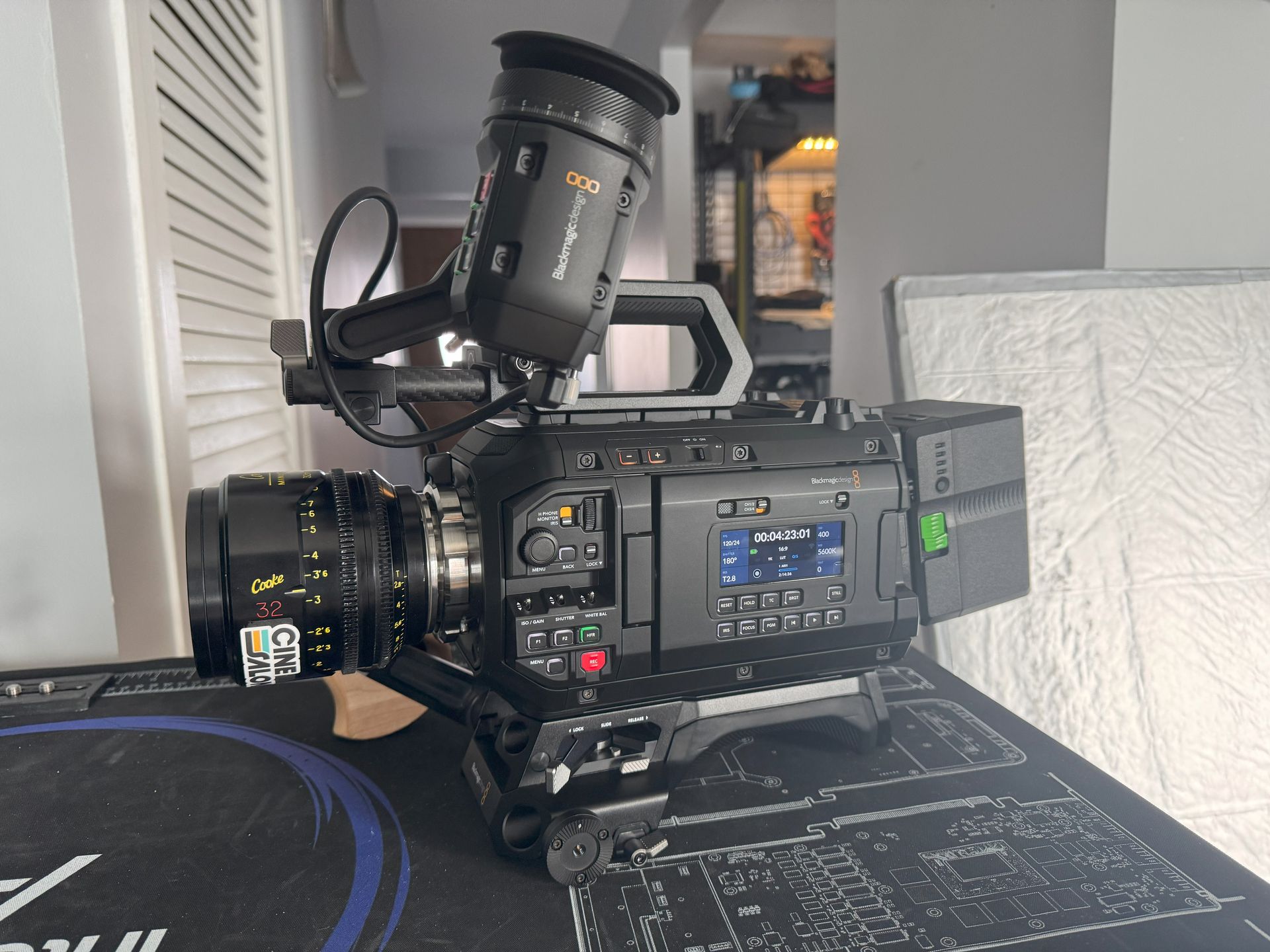
As a business owner, you always look for new ways to attract customers and grow your brand. In today's digital-savvy age, video marketing has become essential for reaching your target audience and standing out.
From social media to websites, videos have proven to be effective in engaging customers and increasing conversions. This guide will explore how video marketing can help small local businesses thrive.
We'll cover everything from defining a video marketing strategy to optimizing videos for SEO and measuring success. In the end, you'll have the knowledge you need to create high-quality videos that drive growth for your business.
Understanding the Local Market
Understanding the local market is crucial for the success of any small business. It allows you to identify your target audience's needs, preferences, and behaviors. It also allows you to check the strengths and weaknesses of your local competition. By doing so, you can tailor your video marketing strategy to meet the unique demands of your local market. This gives your business a competitive edge.
There are three crucial steps to take in understanding the local market; these are;
Step 1: Identify your target audience
Identifying your target audience is important in creating a successful video marketing campaign for your small local business. It involves gathering information on your potential customers. This includes their age, gender, income, interests, and values. Conducting market research is an effective way to gather this information.
One way to gather demographic information is through surveys. You can conduct online or even in-person surveys to gather customer information. By asking specific questions about age, gender, income, and interests, you can begin to build a profile of your target audience. Surveys can also be an effective tool for understanding customer behavior, preferences, and pain points, all of which can help you create videos that resonate with your target audience.
Another way to gather information on your target audience is through focus groups. Focus groups refer to bringing together a small group of people who fit your target audience profile and asking them questions about your business, products, or services. This can be a valuable tool for gaining deeper insights into your target audience's motivations, preferences, and behaviors.
Step 2: Research your local competition
Researching your local competition is important in developing a successful video marketing campaign for your small local business. By analyzing their marketing strategies, products, and services, as well as their strengths and weaknesses, you can gain insights into how to differentiate your business from theirs and fill gaps in the market.
One way to research your competition is to conduct a SWOT analysis. SWOT simply stands for Strengths, Weaknesses, Opportunities, and Threats. This involves identifying your competitors' strengths and weaknesses in areas such as marketing, product quality, customer service, and pricing. By understanding their strengths and weaknesses, you can find opportunities to differentiate your business and fill gaps in the market that they may be overlooking.
For instance, you own a small coffee shop in a competitive local market. By researching your competition, you may discover that your competitors have yet to create videos showcasing their products or services. This presents an opportunity for you to create engaging videos that set your business apart.
You could create a video highlighting your coffee's unique flavor or your coffee shop's friendly and welcoming atmosphere. This video content can help your business stand out and attract new customers.
Step 3: Keep a pulse on the local community
To create effective video marketing campaigns for your small local business, staying in touch with the local community is important. This involves attending local events, engaging with your customers on social media, and watching local trends and news.
Attending local events is a good way to connect with your community and stay up to date with what's happening in your area. Whether it's a farmers market, a street fair, or a local charity event, attending these events can give you a sense of what's important to your community and what types of products and services they may be looking for.
Keeping an eye on local trends and news can also help you create videos that resonate with your audience. For example, if a new restaurant is opening up in your area, you could create a video showcasing your business as a great place to grab a coffee or dessert before or after dining at the new restaurant. Or, if a local charity event is happening, you could create a video that showcases your business's involvement and encourages customers to take part.

Defining the Video Marketing Strategy
Creating an effective video marketing strategy is crucial for small local businesses that want to increase their visibility and reach a wider audience. By defining a clear strategy, you can ensure your videos align with your business goals. Here are some key steps to defining a successful video marketing strategy:
Step 1: Setting the goals
When drafting out goals for your video marketing strategy, it's important to be specific, measurable, attainable, relevant, and time-bound (SMART). This means that your goals should be clear, measurable, achievable, relevant to your business, and have a deadline for completion.
For instance, if your desire is to increase sales, you might set a goal of increasing sales by 10% over the next six months through your video marketing efforts. This goal is measurable, attainable, relevant, and time-bound instead of a 50% sales increase which may not be achievable as you start out.
By setting clear goals for your video marketing strategy, you can track your progress and adjust as needed to achieve your objectives.
Step 2: Creating a budget
Creating a budget for your video marketing strategy is essential for small local businesses to ensure they divide their resources well. Here are some savvy tips for creating a budget for your video marketing strategy;
- Determine your overall budget
Start by determining how much money you can invest toward your video marketing efforts. This will help you determine what types of videos you can afford to produce and how often you can produce them.
- Break down your costs
Once you have determined your overall budget, it's important to break down your costs into different categories, such as pre-production, production, and post-production. This will help you better understand where your money is going and adjust as needed.
- Prioritize your spending
Determine which aspects of video production are most important to you and put them first place. For example, if the high-quality production value is essential to your brand, you may need to allocate more of your budget towards equipment and editing software.
- Explore cost-saving measures
There are many ways available to save money on video production without sacrificing quality. For example, you can shoot your videos in-house or partner with a local videographer to reduce production costs. You can also repurpose existing footage or use stock footage to reduce production time and costs.
As an example, you have a total budget of $5,000 for your video marketing strategy. You might allocate $1,500 for pre-production costs, $2,000 for production costs, and $1,500 for post-production costs. Within each category, you would prioritize your spending based on your goals.
Step 3: Identifying the types of videos to be created
Identifying the types of videos to be created is critical in developing a successful video marketing strategy for small local businesses. Here are some common types of videos that can be effective for local businesses;
- Brand videos
These videos tell your brand's story and showcase your values, mission, and vision. Brand videos help establish your business's identity and can be used to build brand awareness.
- Product or service videos
These videos showcase the features and benefits of your products or services. Product or service videos can help customers understand how your offerings can meet their needs and solve their problems.
- How-to videos
These types of videos provide step-by-step instructions on how to use your products or services. How-to videos can be especially effective for businesses that offer complex or technical products.
- Testimonial videos
These videos feature well-satisfied customers sharing their positive experiences with your products or services. Testimonial videos help build trust with potential customers and increase conversion rates.
- Event videos
These videos capture highlights from local events that your business participates in or sponsors. Event videos help build community engagement and promote your business's involvement in the local community.
Step 4: Creating a content calendar
Once you have identified the types of videos you want to create for your small local business, it's time to create a content calendar. A content calendar is like a schedule that outlines when and where your videos will be published, along with the topics and themes you will cover in each video.
Creating a content calendar helps you stay especially organized and consistent with your video marketing efforts. Here are some great tips you can use to create an effective content calendar;
- Determine your publishing schedule
Decide how often you want to publish new videos. Will you publish weekly, bi-weekly, or monthly? Consider your budget, resources, and your team's availability when determining your publishing schedule.
- Choose the right channels
Determine which platforms you want to publish your videos on. Will you publish on YouTube, Facebook, Instagram, or other social media platforms? Consider where your target audience spends the most time online and tailor your video content to those platforms.
- Brainstorm video ideas
Use your business goals and audience research to generate video ideas. Consider timely events, seasonal themes, and industry trends when brainstorming video ideas.
- Map out your content
Once you have your video ideas, map out your content calendar. Use a project management tool to plan out when each video will be published, what platform it will be published on, and what topic it will cover.
For example, let's say you are a local coffee shop that wants to create a video marketing strategy to attract new customers. Your content calendar might look like this;
Week 1: "Behind the Scenes" video showcasing the coffee roasting process on Instagram
Week 2: "Meet the Baristas" video featuring interviews with your staff on Facebook
Week 3: "How-To" video showing how to make your signature drink on YouTube
Week 4: "Customer Testimonials" video featuring happy customers sharing their favorite drinks on Instagram
Creating High-Quality Videos
Creating high-quality videos is essential to the success of your video marketing strategy. Your videos need to be visually appealing, informative, and engaging to capture the attention of your target audience. Here are some tips for creating high-quality videos;
1. Invest in good equipment
While you don't need to break the bank, investing in good equipment can go a long way in improving the quality of your videos. A high-quality camera, microphone, and lighting equipment can make a big difference in the final video. These go a long way in determining the outcome of your videos.
2. Plan your shots
Take the time to plan out your shots ahead of time. This can help you ensure that you capture the footage you need and avoid any unnecessary reshoots.
3. Focus on audio quality
Poor audio can ruin an otherwise great video. Invest in a good microphone and ensure the audio is clear and easy to understand.
4. Use the right lighting
Lighting can greatly affect your videos' overall look and feel. Ensure your subject is well-lit and the lighting is consistent throughout the video.
5. Edit your videos
Once you have captured your footage, take the time to edit your videos. This can help you trim down unnecessary footage, add music or sound effects, and ensure the final product is polished and professional.
6. Keep it short and sweet
Attention spans are short, especially when it comes to online video content. Keep your videos to the point, focusing on the most important information and keeping your audience engaged from start to finish.

Hiring a professional videographer
While creating videos in-house can be a great way to save money, sometimes hiring a professional videographer is best to ensure that your videos are of the highest quality. Here are a few details to consider when hiring a professional videographer;
1. Pricing
The cost of hiring a pro videographer can vary depending on their experience, equipment, and the type of video you want to create. Be sure to get quotes from multiple videographers and compare them to find the best value for your budget.
You can expect to pay between $500 - $7000 or even more for a professional video, depending on the length and complexity of the project.
2. Experience
Look for a videographer with experience creating videos for similar businesses. A videographer specializing in weddings may not have the same skill set as one specializing in corporate video production.
3. Portfolio
Review the videographer's portfolio to get a sense of their style and quality. Look for videos that are similar in style and tone to the ones you want to create.
4. Equipment
A professional videographer should have high-quality equipment, including cameras, lighting, and audio. Ensure that the videographer you choose has the equipment to create the type of video you want.
5. Communication
A good videographer should be easy to communicate with and able to understand your vision for the video. Look for someone who listens to your needs and is willing to collaborate to create the best possible video.
6. Post-production
Ask the videographer about their post-production process. Will they handle editing, color grading, and adding music and sound effects? Make sure you know upfront what to expect before you sign a contract.
Optimizing Videos for SEO
Optimizing your videos for SEO (search engine optimization) is crucial for ensuring that your target audience discovers your videos. Here are some of the key reasons why optimizing your videos for SEO is so important:
- Increases visibility and traffic to your website
- Helps your videos appear on search engine results pages
- Enhances the user experience and engagement with your videos
- Boosts your overall search engine rankings
- Allows you to track and analyze the performance of your videos
- Provides valuable insights into your target audience's behavior and preferences
- Helps you create more targeted and effective video content
Keyword research for video content
Keyword research is an important part of creating video content that is optimized for search engines. Here are some crucial steps to follow when conducting keyword research for your video content;
1. Identify relevant keywords
When it comes to video marketing, using the right keywords can help your videos reach a wider audience and attract more views. Here's an example of how to identify relevant keywords:
Let's say you run a small coffee shop in a local town and want to create a video about your new line of specialty drinks. Start by brainstorming keywords that are relevant to your business and the topic of your video, such as "coffee shop," "specialty drinks," "local coffee," and "coffee flavors." Then, use a tool like Google AdWords Keyword Planner or SEMrush to find related keywords that are popular in your industry and in your city.
When you enter your initial keywords into the tool, it will generate a list of related keywords along with data on their search volume and competition level. For example, you may discover that "iced coffee," "latte art," and "coffee beans" are also popular keywords in the coffee industry. You would want to use these keywords as tags, descriptions, and so on.
It's important to note that keyword research should be an ongoing process. As your business evolves and your marketing goals change, you may need to adjust your keyword strategy to stay relevant and competitive.
2. Analyze the competition
Analyzing your competition's video content is an important step in developing your own video marketing strategy. By looking at the keywords that your competitors are targeting, you can gain valuable insights into what is working for them and what keywords you might want to target in your videos.
For example, let's say you run a local coffee shop and want to create videos to promote your business. You might start by researching your competition to see what types of videos they create and which keywords they target.
After researching, you might find that one of your competitors is creating videos that target the keyword "best coffee in town." This could give you an idea for a video of your own, in which you showcase your unique blend of coffee and highlight what sets it apart from the competition.
3. Choose long-tail keywords
Regarding video marketing, choosing the right keywords is essential to making your content discoverable and driving traffic to your website. Long-tail keywords are a powerful tool in this regard, as they tend to be more specific, targeted, and less competitive, making it easier to reach your ideal audience.
For example, let's say you run a local bakery and want to create a video promoting your cupcakes. Rather than targeting the broad keyword "cupcakes," which will likely be highly competitive, you might target a long-tail keyword such as "vegan cupcakes in downtown Austin." This will help you stand out in a crowded field and attract customers specifically looking for vegan cupcakes in your local area.
To find the right long-tail keywords for your video content, you can use tools like Google Trends, which allows you to see what people are searching for in your industry and which keywords are trending. You can also look at the long-tail keywords your competitors are targeting and see if there are any opportunities to differentiate yourself and target different keywords they might be overlooking.
Optimizing video titles, descriptions, and tags
Optimizing your video titles, descriptions, and tags is an important part of video marketing that can help your videos reach an even wider audience and rank higher in search engine results.
Let's say you create a video about your local bakery's best-selling cupcakes. To optimize your video for search engines, you should include relevant keywords in your title, such as "Best Cupcakes in [Your City] - [Your Bakery Name]. This helps potential viewers find your video when they search for terms related to your business or product.
When writing your video description, include relevant keywords and a brief summary of your video. This can help viewers understand what to expect and encourage them to click through and watch your video.
In addition, adding relevant tags to your video can help it rank higher in search results. Tags are keywords or phrases that help describe the content of your video and can help it show up in search results for those terms.
For instance, for the bakery example mentioned earlier, you might use tags like "cupcakes," "baked goods," "desserts," and "local bakery." These tags can help your video show up in search results for those terms, increasing the chances of it being seen by potential customers.
Sharing Videos on Social Media
Social media has become an indispensable tool for businesses looking to promote their video content and connect with their target audience. Some benefits of social media in video marketing include;
1. Social media platforms allow businesses to reach a wider audience and increase brand visibility.
2. Social media platforms offer a cost-effective way to promote video content and drive traffic to a business's website.
3. Social media platforms provide valuable data and analytics that can help businesses measure the success of their video marketing campaigns.
4. Social media platforms allow businesses to target specific demographics and reach their ideal customers.
5. Social media platforms offer various formats for video content, such as short-form videos, live streaming, and stories, which can help businesses cater to different audience preferences.
6. Social media platforms offer a platform for user-generated content, which can increase brand loyalty and advocacy.
7. Social media platforms allow businesses to stay up-to-date with industry trends and customer preferences.
Choosing the right social media platforms
When it comes to video marketing, choosing the right social media platforms is crucial to the success of your campaign. Not all platforms are created equal, and each has its own unique strengths and weaknesses.
Choosing the right platforms for your business can maximize your reach and engagement and connect with your target audience more meaningfully.
Here are some factors to consider when choosing the right social media platforms for your video marketing campaign:
1. Demographics
Consider the demographics of your target audience and which social media platforms they are most active on. For example, if your target audience is predominantly young and tech-savvy, you should focus on platforms like Instagram and TikTok. On the other hand, if your target audience is more mature and professional, you should focus on platforms like LinkedIn.
2. Content type
Consider the type of content you are creating and which platforms are best suited for that content. For example, if you create short, snackable videos, platforms like Instagram and TikTok may be ideal. If you create longer, more informative videos, platforms like YouTube and Facebook may be better.
3. Competition
Consider where your competitors are most active and which platforms they prefer to reach their audience on. This can help you identify gaps in the market and find opportunities to stand out.
Tips for sharing videos on social media
Sharing your videos on social media is essential to your video marketing strategy. Here are some tips to make the most of your social media presence and get the most out of your video content:
1. Optimize your videos for each platform
Different social media platforms have different video requirements and specifications. Ensure your videos are optimized for each platform to ensure that they look and perform their best. For instance, Instagram has a maximum video length of 3 secs to 60 minutes, while TikTok videos can go up to 10 minutes and require a vertical orientation.
2. Use eye-catching thumbnails
The thumbnail of your video is the first thing that users will see, so make sure it's eye-catching and relevant to your video's content. Use images that accurately represent your video and contrasting colors to make your thumbnail stand out.
3. Include subtitles
Many social media users watch videos with the sound off, so including subtitles is important. This not only makes your videos more accessible but also allows users to engage with your content even when they can't turn on the sound.
4. Add call-to-actions
Make sure to add a call to action at the end of your videos to encourage viewers to engage with your content. This could include asking them to follow your page, like and share your video, or visit your website.
5. Engage with your audience
Social media is all about engagement, so respond to your audience's comments and messages. Don't just upload videos, and that is all. This builds a stronger relationship with your followers and helps boost engagement and visibility for your videos.
Measuring and Analyzing Video Marketing Success
Measuring and analyzing the success of your video marketing campaign is essential to understanding its effectiveness and identifying areas for improvement. Here are some key steps to consider when measuring and analyzing the success of your video marketing campaign;
1. Identifying key performance indicators (KPIs)
Identifying key performance indicators (KPIs) is a critical step in measuring the success of your video marketing campaign. KPIs are specific metrics that you can use to track the performance of your videos and determine whether they are achieving your business objectives.
For example, if your goal is to increase brand awareness, a KPI for your video marketing campaign might be the number of video views or the reach of your videos on social media. Alternatively, if your goal is to drive conversions, a KPI for your video marketing campaign might be the number of leads generated or the conversion rate of viewers who watch your video and take a specific action, such as filling out a form or making a purchase.
By identifying your KPIs upfront, you can focus on creating videos tailored to achieving those specific goals. You can also track your progress over time and adjust your strategy as needed to ensure that you are on track to meet your objectives.
2. Set Benchmarks
Setting benchmarks is a crucial step in measuring the success of your video marketing campaign. Benchmarks are specific goals you set for each key performance indicator (KPI) you have identified. These goals help you track your progress over time and ensure that you are on track to achieve your overall marketing objectives.
For example, let's say one of your KPIs is video views. To set a benchmark for this metric, look at the average number of views your competitors' videos get and set a goal to surpass that number within a certain timeframe. Alternatively, set a specific target for the views you want to achieve with each video you create based on your audience size and engagement rates.
Another important KPI to measure is engagement rate, including likes, comments, and shares. To set benchmarks for this metric, analyze your competition's engagement rates and set a goal to achieve a certain engagement percentage for each video you create.
3. Use Analytics Tools
Using analytics tools is an essential component of any successful video marketing campaign. By tracking and analyzing key metrics, you can gain valuable insights into your videos' performance and identify improvement areas.
There are many analytics tools available that can help you track the success of your video marketing campaign. Here are a few free and paid examples you can use;
- YouTube Analytics
This free tool provided by YouTube allows you to track and analyze key metrics such as video views, engagement rates, and demographics. With YouTube Analytics, you can see how many people are watching your videos, how long they are watching, and where they are located.
To access YouTube analytics for a particular video, follow these steps;
1. Log in to your YouTube account and visit your Creator Studio.
2. Click on the "Analytics" tab in the left sidebar.
3. In the "Overview" section, you should see a chart displaying your estimated revenue, views, and watch time for the selected date range.
4. Below the chart is a list of your most recent videos. Click on the video title you want to see the analytics for.
5. This will take you to the video's analytics page, where you can see detailed data on its performance, such as views, watch time, audience retention, demographics, traffic sources, and engagement metrics.
From there, you can use the various tabs and filters to analyze the performance of your video in more detail and get insights into how you can improve your video marketing strategy.
- Google Analytics
This is a free tool provided by Google that can be used to track and measure the success of your video marketing campaign across various platforms, including your website, social media channels, and YouTube. With Google Analytics, you can track key metrics such as traffic, engagement, conversion rates, and demographic data on your audience.
You can use the Google Ads platform to track the performance of your video ads on Google. Within Google Ads, you can access the Video Campaigns tab to view performance metrics and analytics for your video ads.
To find analytics for a specific video ad, follow these steps:
1. Log in to your Google Ads account and navigate to the Video Campaigns tab.
2. Find the specific video ad you want to analyze and click on it.
3. You should see a detailed breakdown of the ad's performance, including metrics like views, click-through rates, and engagement metrics like likes, comments, and shares.
4. Click the "View performance" button to access more detailed analytics. This will take you to a dashboard to view additional metrics like view-through rate, average watch time, and more.
- Wistia
This paid video hosting and analytics platform provides detailed insights into your videos' performance. With Wistia, you can track key metrics such as video views and conversion rates and gain insights into viewer behavior and preferences.
- Vidyard
This is another paid video hosting and analytics platform that provides detailed insights into how your videos are performing. With Vidyard, you can track key metrics such as video views and conversion rates. Vidyard also includes advanced features such as video personalization and interactive video elements. Analyzing video engagement metrics.

Conclusion
Video marketing can be a great tool for small local businesses to reach new customers and build lasting relationships with their existing ones. By understanding your local market, setting clear goals, creating high-quality videos, and promoting them effectively, you can create a successful video marketing strategy that helps your business grow and thrive.
So if you're a small local business owner looking to get started with video marketing, don't be afraid to take the leap. It may be challenging initially, but we've shown you the ropes in this article.
And if you need help along the way, remember that plenty of resources are available to you, from professional videographers to online tutorials and courses. So don't hesitate to reach out and ask for help if you need it.

Get total clarity on your video marketing and paid media with our FREE comprehensive data audit.







